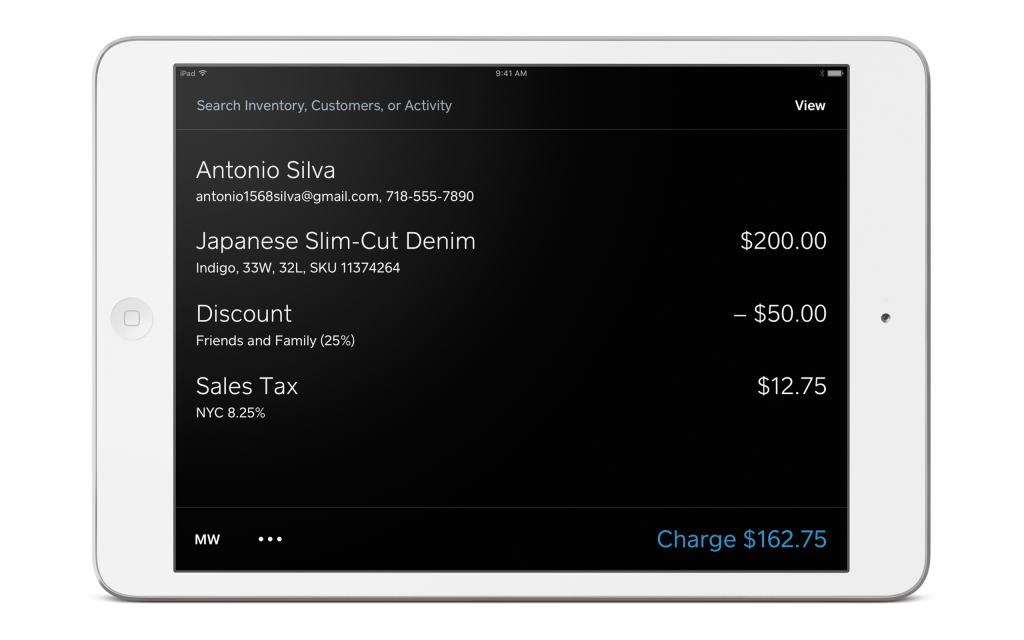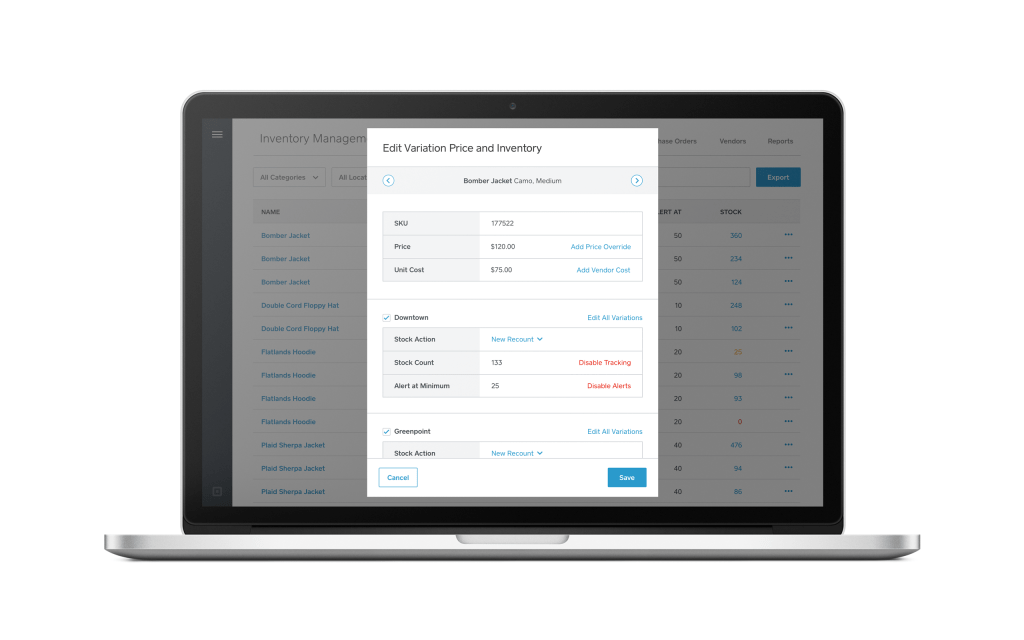Square has a new approach to retail customers it’s launching today, with a brand new Square Retail app that complements a comprehensive backend package of tools that include complete coverage of inventory management, customer relationship management and employee tools.
The new offering is designed to really provide a next-level retail solution for merchants and shop owners who need more than just the Square Reader and basic square mobile app. Square’s Point of Sale Lead Matthew O’Connor explained to me that the solution can and does scale depending on the needs of their clients, but can serve any customers from a one-location shop to a merchant with multiple storefronts and lots of inventory to track.
“We’re mostly targeting folks where it’s generally what we call ‘owner-led,’ so it’s usually one decision maker who’s making a decision for how they run their business. It will scale to hundreds of locations, it will scale to hundreds of thousands of SKUs and items.”
For now the primary type of retailer Square is targeting with this product are those in the “finished goods” business, which means people who have packaged products or things like shirts and clothing that have barcodes, as well as things like wine or games, O’Connor says. Those are best suited to its inventory management system, which O’Connor and Square demoed for me, and which boasts a smart, clean, simple and intuitive interface.
The new Square Retail app is heavily search focused, letting you quickly and easily find things like customer profiles and any item in your inventory with a unified search bar at the top of the interface. The app also supports barcode scanning for quickly building out a customer’s cart at checkout, and all of its features plug into a new extensive backend that’s equally simple, clean and easy to use.
Using Square’s new dashboard tools, shop owners and retail staff can maintain and browse a new smart customer directory, that tracks sales and builds profiles of shoppers, and that can also contain notes included by sales associates who’ve helped them. The system also auto-groups customers based on shopping habits, which is convenient feature if you’re a small store with an active customer population and CRM isn’t your primary focus.
Inventory management is similarly slick, with real-time unit counts that scale across locations, if a shop owner has more than one. This system also allows you to request transfer of units from one location to another, and it makes ingest easy by letting you input and track your purchasing orders, including marking shipments as received to automatically load those new items into your inventory.
The last component of the system, the employee management tools, allow you to set access levels for individuals or groups, which helps ensure that you can keep the whole thing running smoothly across multiple stores.
Square says it has designed the whole system to be something most people can pick up and teach themselves with minimal effort, the same way it approached its original business of letting individual merchants receive payments via their phone. The idea was to create something lightweight but fully functional, and then offer it at a minimum price – Square’s asking $60 per month per register for access to the total Square for Retail package.
“You have access to the integrated payments, access to Capital, access to chargeback protection, and our analytics,” O’Connor offered when I asked why store owners might choose Square Retail over competitors like Shopify or Revel. “One of the big things we’ve heard from our customer is they really do want a one-stop shop, they want to go to one place where they feel like somebody could help them run their business, and having to have multiple vendors and multiple people that they’re working with is generally considered a downside. So I think ultimately it’s all the stuff you’ve seen from Square, and the fact that it’s all working together and coming together on the back end.”
Square is banking on its ecosystem effect, in other words, and that’s a compelling advantage for its target group of customers, who are often shouldering a lot of responsibility themselves. When they need to rely on outside vendors, it makes sense that they would generally much rather have one company and contact to deal with. Square’s rethink of its approach to retail seems like a much more targeted and thorough plan, which bodes well for their chances in this segment.



